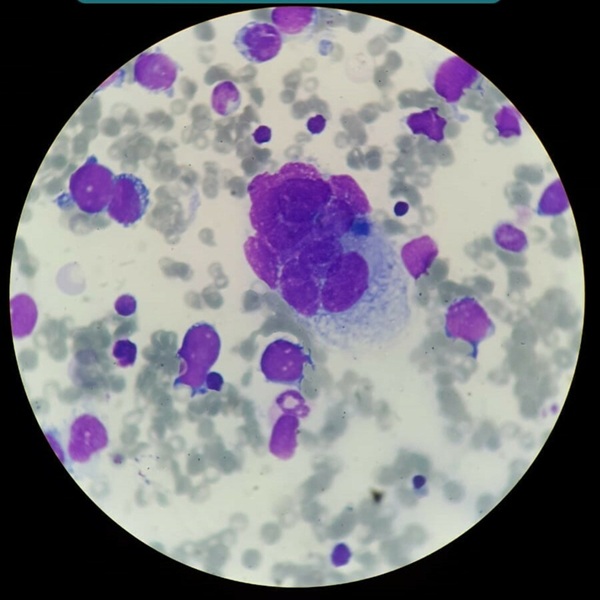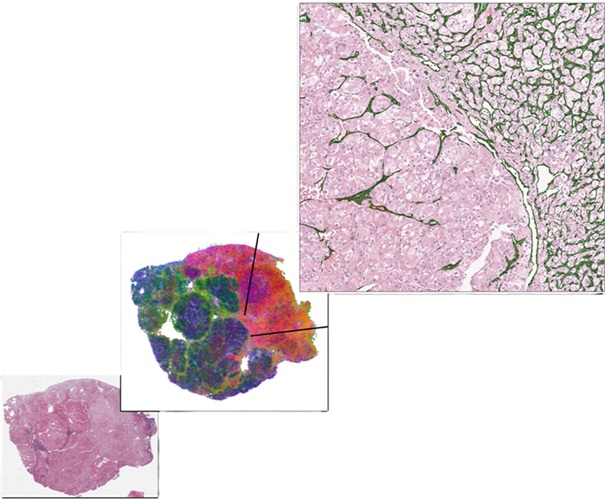Gene Vaccine Protects Mice from Influenza Virus Strains
|
By LabMedica International staff writers Posted on 13 Nov 2017 |
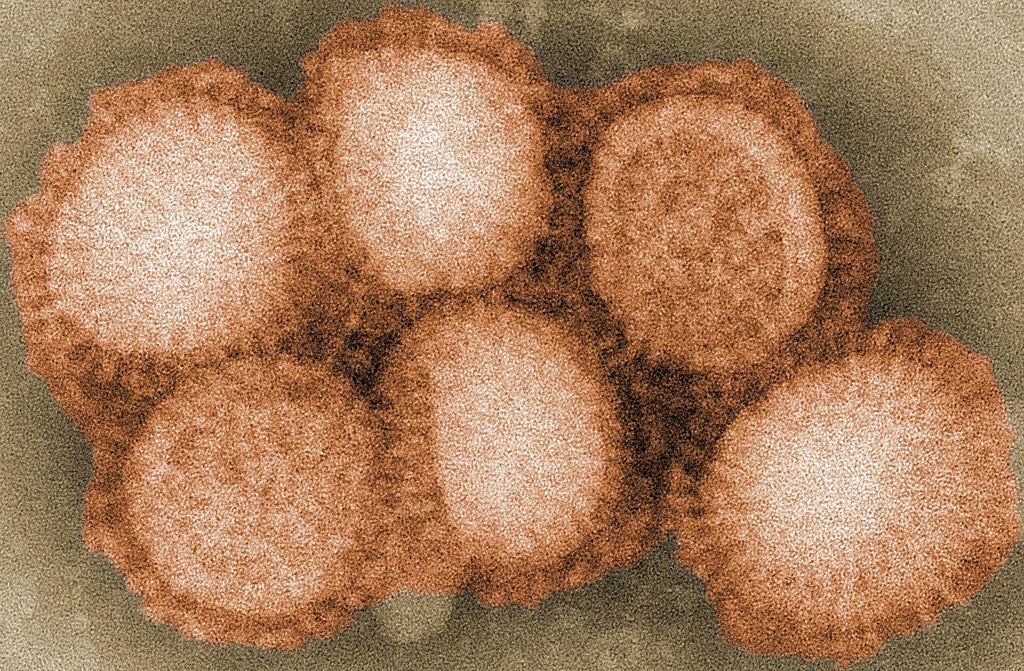
Image: A scanning electron micrograph (SEM) of the influenza virus (Photo courtesy of the CDC).
A team of molecular virologists protected mice from deadly infection caused by a range of influenza viruses by using a deactivated adenovirus vector to vaccinate them with a cocktail of centralized viral genes.
In a study conducted by investigators at the University of Nebraska, Lincoln (USA), mice were immunized with replication-defective adenovirus expressing the H1-con, H2-con, H3-con, and H5-con HA (hemagglutinin) consensus influenza virus genes in combination (multivalent) and compared to mice immunized with the traditional 2010–2011 FluZone and FluMist seasonal vaccines. The mice were then challenged with 10–100 MLD50 (the median lethal dose required to kill half the population) of H1N1, H3N1, H3N2 and H5N1 influenza viruses.
The investigators reported in the November 2, 2017, online edition of the journal Scientific Reports that the traditional vaccines induced robust levels of HA inhibition (HI) titers, but failed to protect against five different heterologous lethal influenza challenges. Conversely, the multivalent consensus vaccine induced protective HI titers against eight of 10 influenza viruses that represented a wide degree of divergence within the HA subtypes and protected 100% of mice from eight of nine lethal heterologous influenza virus challenges.
The vaccine protection was dose dependent, in general, and a low dose still provided 100% survival against seven of nine lethal heterologous influenza challenges. These data indicated that very low doses of adenovirus-vectored consensus vaccines induced superior levels of immunity against a wide divergence of influenza subtypes as compared to traditional vaccines.
"Our idea is that these centralized antigens can set up a foundation of immunity against influenza," said senior author Dr. Eric Weaver, assistant professor of biological sciences at the University of Nebraska, Lincoln. "Because they are centralized and represent all the strains equally, they could provide a basis for immunity against all evolved strains. An ideal influenza vaccine would be inexpensive, provide long-lasting immunity, require few immunizations, and would work against all variants of the virus. The ultimate goal is to be able to vaccinate once and provide lifelong protection."
Related Links:
University of Nebraska, Lincoln
In a study conducted by investigators at the University of Nebraska, Lincoln (USA), mice were immunized with replication-defective adenovirus expressing the H1-con, H2-con, H3-con, and H5-con HA (hemagglutinin) consensus influenza virus genes in combination (multivalent) and compared to mice immunized with the traditional 2010–2011 FluZone and FluMist seasonal vaccines. The mice were then challenged with 10–100 MLD50 (the median lethal dose required to kill half the population) of H1N1, H3N1, H3N2 and H5N1 influenza viruses.
The investigators reported in the November 2, 2017, online edition of the journal Scientific Reports that the traditional vaccines induced robust levels of HA inhibition (HI) titers, but failed to protect against five different heterologous lethal influenza challenges. Conversely, the multivalent consensus vaccine induced protective HI titers against eight of 10 influenza viruses that represented a wide degree of divergence within the HA subtypes and protected 100% of mice from eight of nine lethal heterologous influenza virus challenges.
The vaccine protection was dose dependent, in general, and a low dose still provided 100% survival against seven of nine lethal heterologous influenza challenges. These data indicated that very low doses of adenovirus-vectored consensus vaccines induced superior levels of immunity against a wide divergence of influenza subtypes as compared to traditional vaccines.
"Our idea is that these centralized antigens can set up a foundation of immunity against influenza," said senior author Dr. Eric Weaver, assistant professor of biological sciences at the University of Nebraska, Lincoln. "Because they are centralized and represent all the strains equally, they could provide a basis for immunity against all evolved strains. An ideal influenza vaccine would be inexpensive, provide long-lasting immunity, require few immunizations, and would work against all variants of the virus. The ultimate goal is to be able to vaccinate once and provide lifelong protection."
Related Links:
University of Nebraska, Lincoln
Latest BioResearch News
- Genome Analysis Predicts Likelihood of Neurodisability in Oxygen-Deprived Newborns
- Gene Panel Predicts Disease Progession for Patients with B-cell Lymphoma
- New Method Simplifies Preparation of Tumor Genomic DNA Libraries
- New Tool Developed for Diagnosis of Chronic HBV Infection
- Panel of Genetic Loci Accurately Predicts Risk of Developing Gout
- Disrupted TGFB Signaling Linked to Increased Cancer-Related Bacteria
- Gene Fusion Protein Proposed as Prostate Cancer Biomarker
- NIV Test to Diagnose and Monitor Vascular Complications in Diabetes
- Semen Exosome MicroRNA Proves Biomarker for Prostate Cancer
- Genetic Loci Link Plasma Lipid Levels to CVD Risk
- Newly Identified Gene Network Aids in Early Diagnosis of Autism Spectrum Disorder
- Link Confirmed between Living in Poverty and Developing Diseases
- Genomic Study Identifies Kidney Disease Loci in Type I Diabetes Patients
- Liquid Biopsy More Effective for Analyzing Tumor Drug Resistance Mutations
- New Liquid Biopsy Assay Reveals Host-Pathogen Interactions
- Method Developed for Enriching Trophoblast Population in Samples
Channels
Clinical Chemistry
view channel
AI-Powered Blood Test Accurately Detects Ovarian Cancer
Ovarian cancer ranks as the fifth leading cause of cancer-related deaths in women, largely due to late-stage diagnoses. Although over 90% of women exhibit symptoms in Stage I, only 20% are diagnosed in... Read more
Automated Decentralized cfDNA NGS Assay Identifies Alterations in Advanced Solid Tumors
Current circulating cell-free DNA (cfDNA) assays are typically centralized, requiring specialized handling and transportation of samples. Introducing a flexible, decentralized sequencing system at the... Read more
Mass Spectrometry Detects Bacteria Without Time-Consuming Isolation and Multiplication
Speed and accuracy are essential when diagnosing diseases. Traditionally, diagnosing bacterial infections involves the labor-intensive process of isolating pathogens and cultivating bacterial cultures,... Read more
First Comprehensive Syphilis Test to Definitively Diagnose Active Infection In 10 Minutes
In the United States, syphilis cases have surged by nearly 80% from 2018 to 2023, with 209,253 cases recorded in the most recent year of data. Syphilis, which can be transmitted sexually or from mother... Read moreMolecular Diagnostics
view channel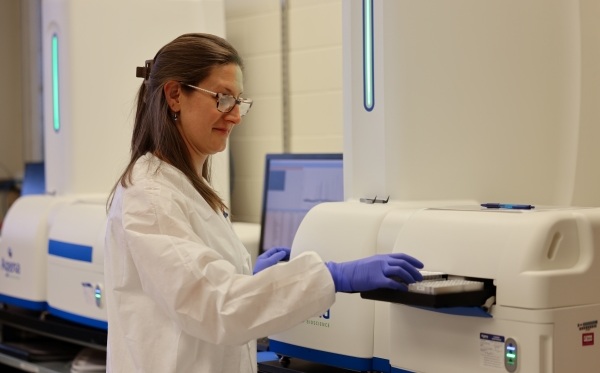
Groundbreaking Molecular Diagnostic Test Accurately Diagnoses Major Genetic Cause of COPD
Chronic obstructive pulmonary disease (COPD) and Alpha-1 Antitrypsin Deficiency (AATD) are both conditions that can cause breathing difficulties, but they differ in their origins and inheritance.... Read more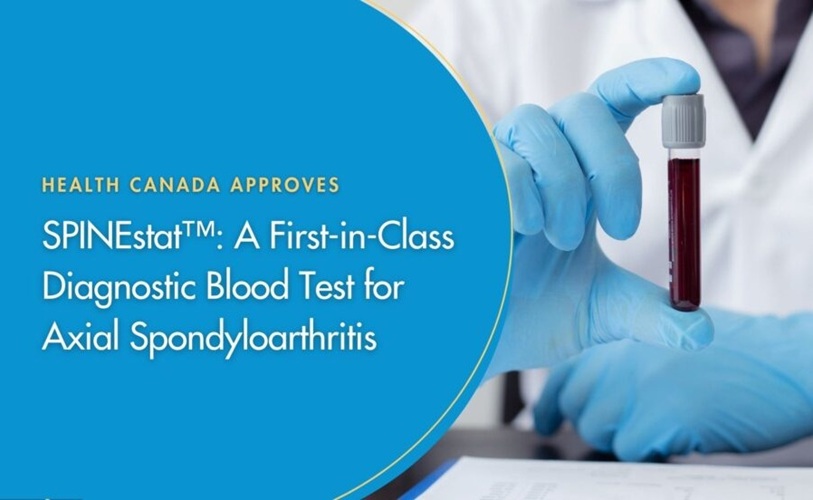
First-in-Class Diagnostic Blood Test Detects Axial Spondyloarthritis
Axial spondyloarthritis (axSpA) is a chronic inflammatory autoimmune condition that typically affects individuals during their most productive years, with symptoms often emerging before the age of 45.... Read more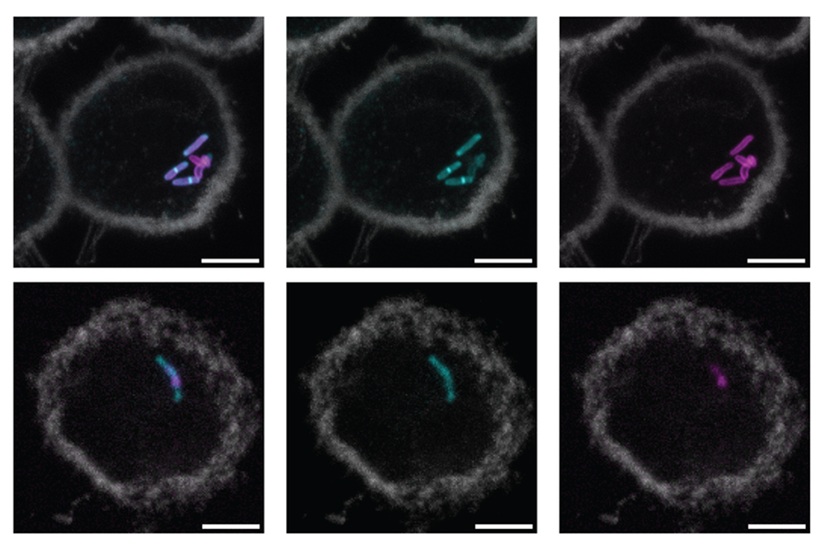
New Molecular Label to Help Develop Simpler and Faster Tuberculosis Tests
Tuberculosis (TB), the deadliest infectious disease globally, is responsible for infecting an estimated 10 million people each year and causing over 1 million deaths annually. While chest X-rays and molecular... Read more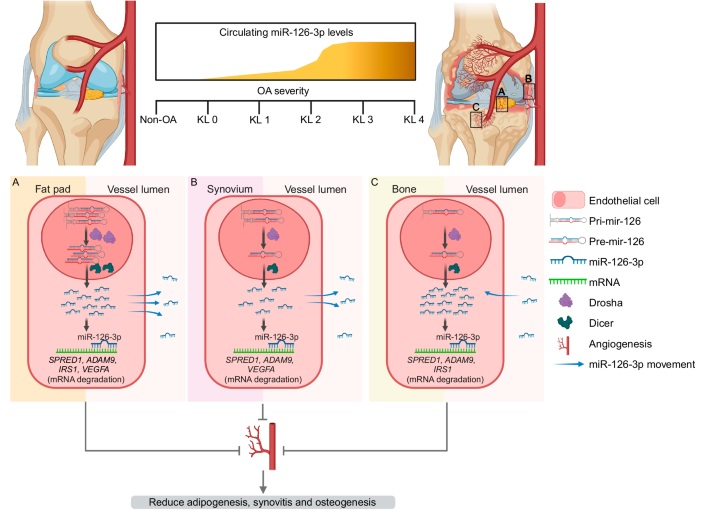
Biomarker Discovery Paves Way for Blood Tests to Detect and Treat Osteoarthritis
The number of individuals affected by osteoarthritis is projected to exceed 1 billion by 2050. The primary risk factor for this common, often painful chronic joint condition is aging, and, like aging itself,... Read moreHematology
view channel
First Point-of-Care Heparin Monitoring Test Provides Results in Under 15 Minutes
Heparin dosing requires careful management to avoid both bleeding and clotting complications. In high-risk situations like extracorporeal membrane oxygenation (ECMO), mortality rates can reach about 50%,... Read more
New Scoring System Predicts Risk of Developing Cancer from Common Blood Disorder
Clonal cytopenia of undetermined significance (CCUS) is a blood disorder commonly found in older adults, characterized by mutations in blood cells and a low blood count, but without any obvious cause or... Read moreImmunology
view channel
Stem Cell Test Predicts Treatment Outcome for Patients with Platinum-Resistant Ovarian Cancer
Epithelial ovarian cancer frequently responds to chemotherapy initially, but eventually, the tumor develops resistance to the therapy, leading to regrowth. This resistance is partially due to the activation... Read more
Machine Learning-Enabled Blood Test Predicts Immunotherapy Response in Lymphoma Patients
Chimeric antigen receptor (CAR) T-cell therapy has emerged as one of the most promising recent developments in the treatment of blood cancers. However, over half of non-Hodgkin lymphoma (NHL) patients... Read moreMicrobiology
view channel
Molecular Stool Test Shows Potential for Diagnosing TB in Adults with HIV
Tuberculosis (TB), caused by the bacterium Mycobacterium tuberculosis, led to 1.25 million deaths in 2023, with 13% of those occurring in people living with HIV. The current primary diagnostic method for... Read more
New Test Diagnoses Bacterial Meningitis Quickly and Accurately
Bacterial meningitis is a potentially fatal condition, with one in six patients dying and half of the survivors experiencing lasting symptoms. Therefore, rapid diagnosis and treatment are critical.... Read morePathology
view channel
Groundbreaking Chest Pain Triage Algorithm to Transform Cardiac Care
Cardiovascular disease is responsible for a third of all deaths worldwide, and chest pain is the second most common reason for emergency department (ED) visits. With EDs often being some of the busiest... Read more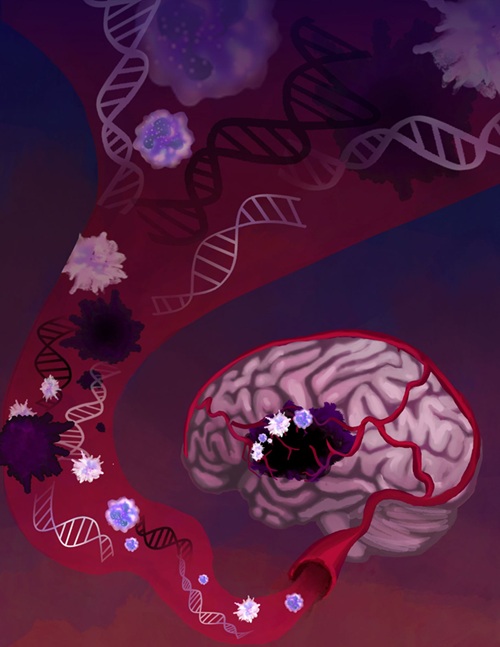
AI-Based Liquid Biopsy Approach to Revolutionize Brain Cancer Detection
Detecting brain cancers remains extremely challenging, with many patients only receiving a diagnosis at later stages after symptoms like headaches, seizures, or cognitive issues appear. Late-stage diagnoses... Read moreTechnology
view channel
Advanced Predictive Algorithms Identify Patients Having Undiagnosed Cancer
Two newly developed advanced predictive algorithms leverage a person’s health conditions and basic blood test results to accurately predict the likelihood of having an undiagnosed cancer, including ch... Read more
Light Signature Algorithm to Enable Faster and More Precise Medical Diagnoses
Every material or molecule interacts with light in a unique way, creating a distinct pattern, much like a fingerprint. Optical spectroscopy, which involves shining a laser on a material and observing how... Read more
Disposable Microchip Technology Could Selectively Detect HIV in Whole Blood Samples
As of the end of 2023, approximately 40 million people globally were living with HIV, and around 630,000 individuals died from AIDS-related illnesses that same year. Despite a substantial decline in deaths... Read more
Pain-On-A-Chip Microfluidic Device Determines Types of Chronic Pain from Blood Samples
Chronic pain is a widespread condition that remains difficult to manage, and existing clinical methods for its treatment rely largely on self-reporting, which can be subjective and especially problematic... Read moreIndustry
view channel
Cepheid and Oxford Nanopore Technologies Partner on Advancing Automated Sequencing-Based Solutions
Cepheid (Sunnyvale, CA, USA), a leading molecular diagnostics company, and Oxford Nanopore Technologies (Oxford, UK), the company behind a new generation of sequencing-based molecular analysis technologies,... Read more
Grifols and Tecan’s IBL Collaborate on Advanced Biomarker Panels
Grifols (Barcelona, Spain), one of the world’s leading producers of plasma-derived medicines and innovative diagnostic solutions, is expanding its offer in clinical diagnostics through a strategic partnership... Read more

















